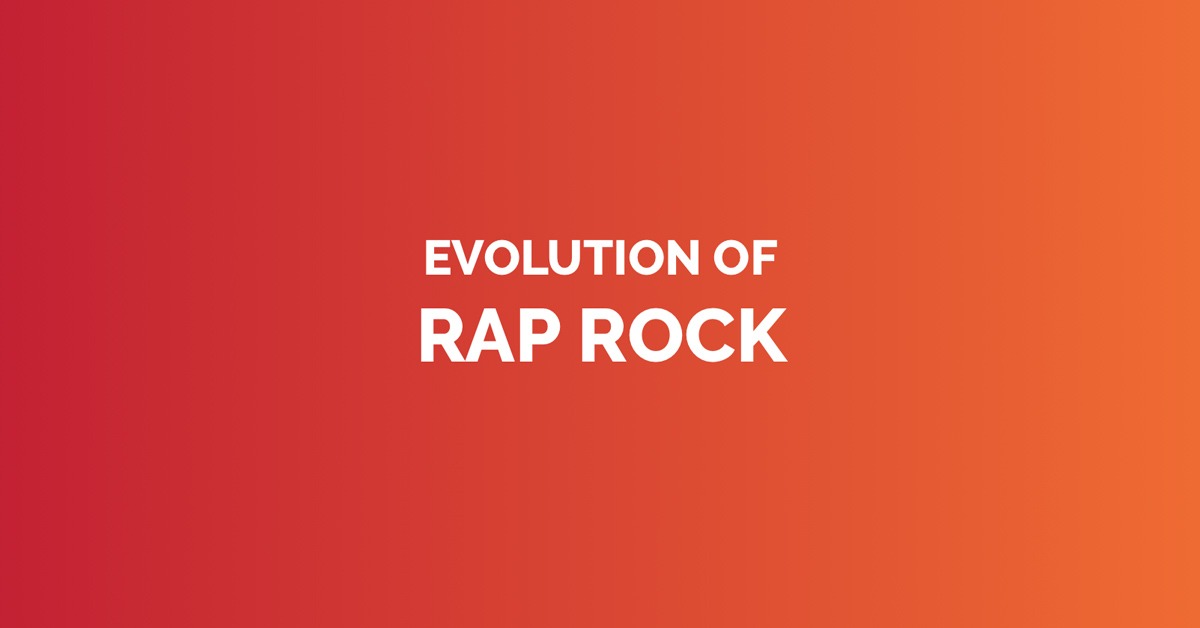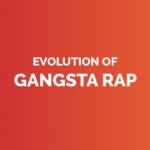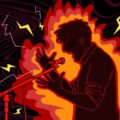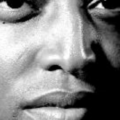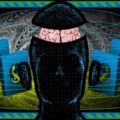History
In the 1980s, rock music was the undisputed king of the airwaves. As hard as it might be to imagine today, hip hop was rarely talked about outside of the urban areas of New York, Los Angeles, and a few other major American cities. That all changed in 1984 when Run-DMC released their single “Rock Box”. Power-chord rock collided with aggressive hip hop vocals on the track, forming an entirely different sound. This combination of styles would have a huge influence on the music industry for decades to come. Rap rock laid the foundations for rap metal, nu metal, and even some forms of experimental trap.
Influences
Rap rock was mainly developed by artists with a hip hop background, who were looking to push back against the musical (and racial) lines being drawn between hip hop and rock. Key influences for rap rock stem from the founding fathers of the hip hop genre, such as Grandmaster Flash, Herbie Hancock, and The Sugarhill Gang. On the rock front, major artists of the 80s like Van Halen, Aerosmith, and Bon Jovi would all have an enormous influence on DJs and MCs looking to make their unique version of rap rock.
Sound
Rap rock replaced the funky bass and jazzy samples of early hip hop with power chord rock guitar. Rather than having flute, horns, and samples play in complement to the main riff, electric guitar solos would be featured. The heavy bass drum from hip hop remained however, sounding even tougher with the added guitar on top. Vocals were often shouted or spoken with a raised voice to avoid being drowned out, creating an upbeat and energetic, often aggressive sound mix.
RUN DMC – “Rock Box”
New York City, New York, 1984
“Rock Box” is the song that launched rap rock into the public eye (and ear). This single received praise from all of the major rock magazines at the time such as Creem and Rolling Stone, paving the way for a massive cultural shift as hip hop crashed into the mainstream.
Red Hot Chili Peppers – “Get Up And Jump”
Los Angeles, California, 1984
Early music from the Red Hot Chili Peppers is as much hip hop as it is rock, with funky bass lines and wild choppy vocal delivery.
LL Cool J – “Rock The Bells”
New York City, New York, 1985
LL Cool J stepped into the rap rock scene with his debut album Radio, also one of the first successful releases for the upcoming label company Def Jam Recordings. Plentiful guitar layered over scratching and bass samples make this a classic of the genre.
RUN DMC – “Walk This Way”
New York City, New York, 1986
If Run-DMC’s “Rock Box” was the song that made rap’s movement into the mainstream take flight, their collaboration with Aerosmith was the track that rocketed it to the moon. “Walk This Way” producer and Def Jam Recordings label owner Rick Rubin convinced a sceptical Run-DMC to cover Aerosmith’s song. What resulted was a track that landed at the top of both urban and rock music charts.
Beastie Boys – “No Sleep Till Brooklyn”
New York City, New York, 1986
Kerry King from heavy metal band Slayer not only plays guitar on this classic track by the Beastie Boys, but he also plays the club manager in the music video.
Faith No More – “Epic”
San Francisco, California, 1990
The alternating rap vocal delivery and melodic singing on “Epic” moves away from Run-DMC’s downtown NYC vibe. Faith No More was just one of a vast number of rap rock bands springing up all over the country.
Anthrax – “Bring The Noise”
New York City, New York, 1991
It seems almost quaint now, but at the time, Anthrax teaming up with Public Enemy was nothing short of impossible to imagine. In an era where metal heads were united in their violent hatred for punks and rappers, the two camps getting together was a massive moment in the history of musical crossovers.
Rage Against The Machine – “Killing In the Name”
Los Angeles, California, 1992
Zack de la Rocha’s vocals took what Faith No More was doing to the next level, and also signalled the beginning of the screamo era. The anthemic chorus of, “f*ck you, I won’t do what you tell me” became a battle cry across the country and made Rage Against the Machine stars.
Kid Rock – “Prodigal Son”
Detroit, Michigan, 1993
Kid Rock first gained notoriety by rapping about being a trailer park pimp, but it was on his second album that he really found his niche with tracks like “Prodigal Son” where he added cranked-up rock guitars to the mix.
Rage Against The Machine – “Guerrilla Radio”
Los Angeles, California, 1999
Seven years after their initial success, Rage Against the Machine was still a dominant player in the genre. And, they did it while maintaining a stripped-down, three-piece sound (guitar, bass, and drums). This was an oddity when compared to the high levels of production most of their contemporaries were using.
Linkin Park – “In The End”
Agoura Hills, California, 2001
Linkin Park didn’t invent the idea of having both a rapper and a vocalist who could hit the high notes in the same band, but they certainly were the first to achieve intense fame with that lineup.
Limp Bizkit – “Rollin'”
Jacksonville, Florida, 2000
Fred Durst is one of the most recognized rap rock front men of the modern era, and with good reason. He helped take Limp Bizkit from a bar band to a legitimate powerhouse on the new rock scene through strong lyrical imagery and an extra-large personality.
Papa Roach – “Last Resort”
Vacaville, California, 2000
Tales of growing up troubled spat out over insistent guitars and driving drums were the soundtrack for many unhappy teens in the early 2000s. Unsurprisingly, tracks like Papa Roach’s “Last Resort” resonated with these despondent suburban youth.
Kanye West – “POWER”
Oahu, Hawaii, 2010
Kanye West samples the 1960s rock band King Crimson on what might be the best modern example of rap rock, where the track’s flow and heavy music work in perfect harmony.
Body Count – “Raining in Blood / Postmortem 2017”
Los Angeles, California, 2017
Rapper Ice-T put together a metal band called Body Count in 1990, which has been releasing albums that blend punk, metal, and hip hop ever since. In 2017 Body Count pulled off a note perfect cover of Slayer’s “Raining Blood”, considered by many an exceptionally difficult song to play.
